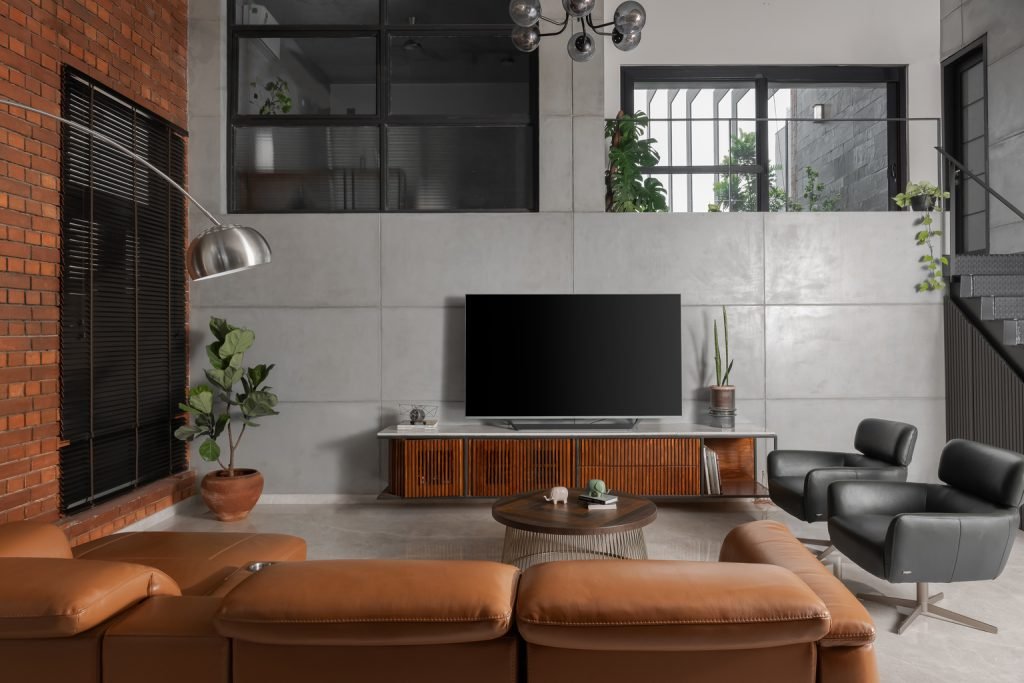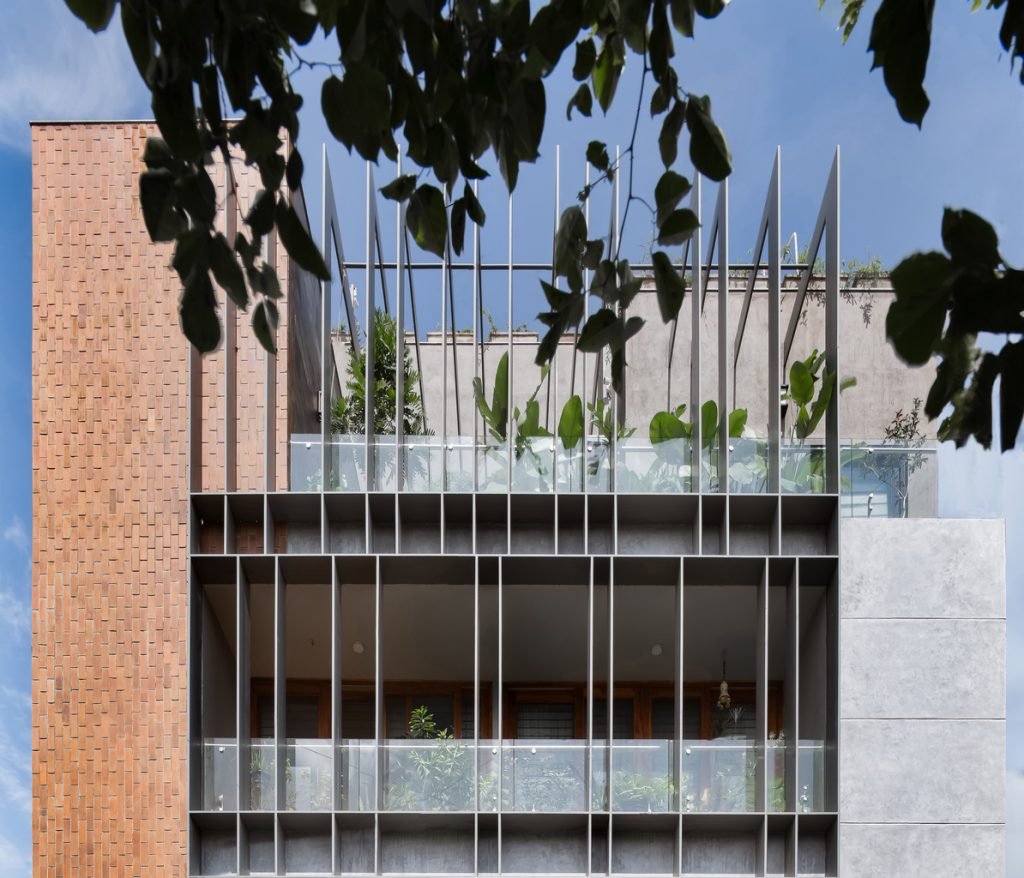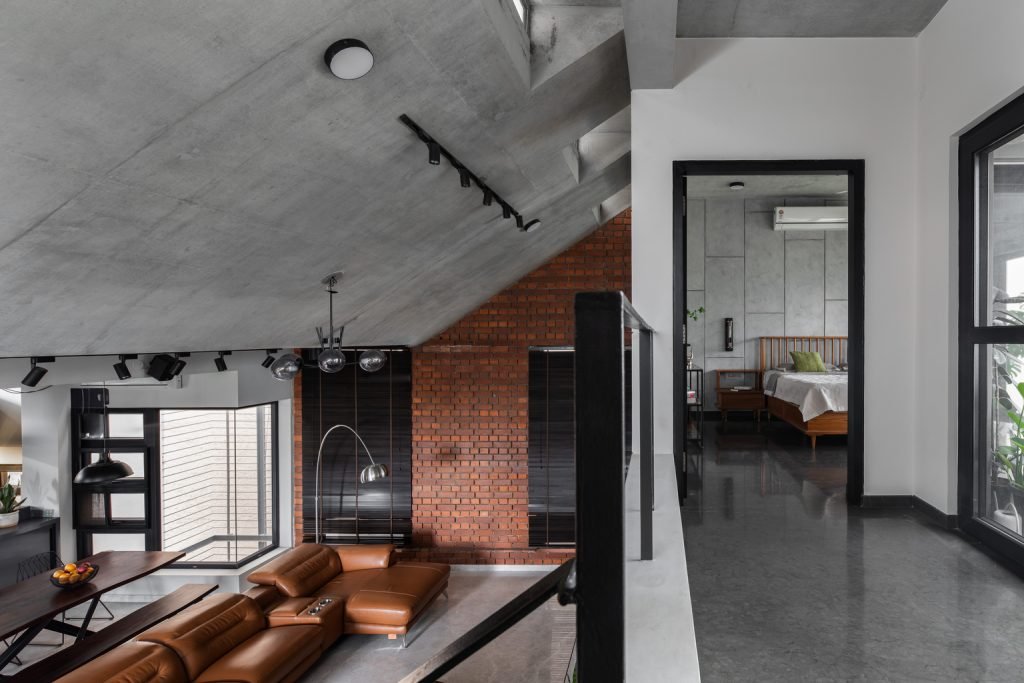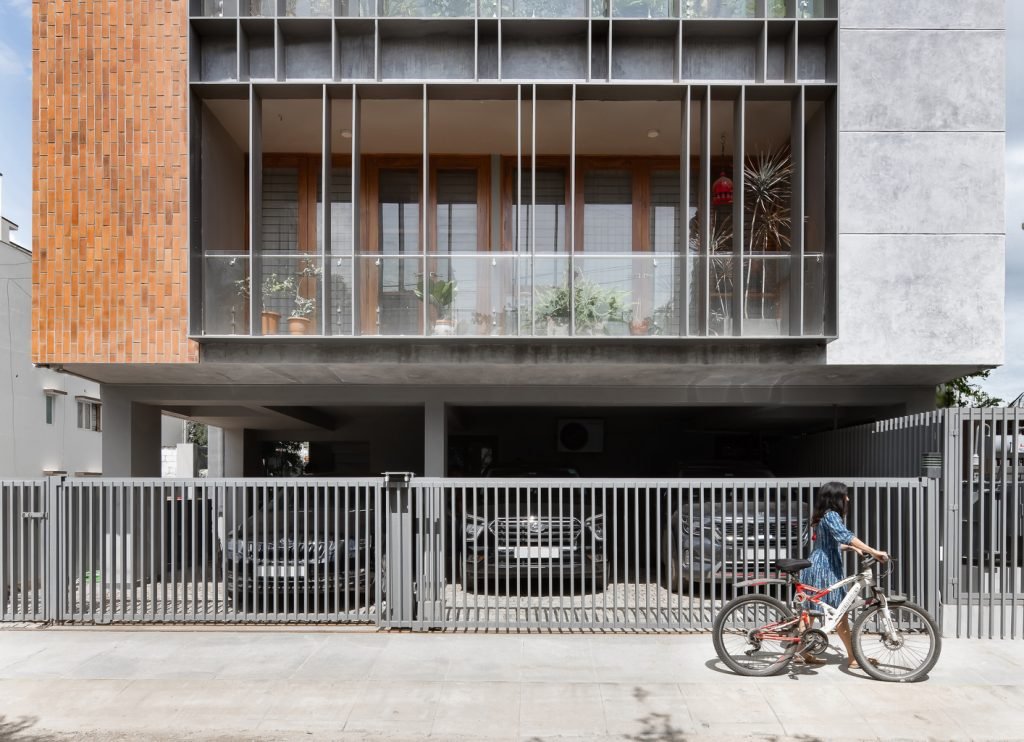
Triode
Location: Bangalore, India
Photo credits: Arjun Krishna Photography
Awards: Geevees 2025 Silver & Peoples choice award: Multi Unit Housing
IIA Karnataka Awards: Runner up Multi family residence
When the client approached us, they had a clear objective: to create three distinct apartments for the families of two sisters and a brother in bangal. Having lived in different parts of bangalore for years, the experience of the covid-19 made them realize the importance of living closer to one another. Their vision was to unite the families in one shared building, fostering both independence and connection while still maintaining a sense of intimacy.
As Architects in Bangalore, one of our primary goals was to design a building that did not feel imposing, despite the relatively constrained size of the site and the substantial requirements. We aimed for a design that maintained a human scale, avoiding the perception of a towering structure while maximizing the usable space.
To achieve this, we adopted a split-level concept for each apartment, taking advantage of the lower height required for the car parking. This allowed for the two street-facing bedrooms to be positioned closer to the ground, creating a more intimate relationship with the street. The separation of living areas across levels created distinct zones within each home, enhancing a sense of individual identity, a quality typically associated with standalone houses. The two upper apartments followed a similar split-level configuration, which led to the creation of a shared amenity space at the roof level including an amphitheater which took advantage of the split level. This would double up as a family gathering space to screen movies and other shared activities. Other communal facilities include a gym, pool table, laundry and a guest room, shared by all three apartments. The split-level design helped conceal this communal floor from view, ensuring the building maintained a low, approachable profile.
The apartment building’s western façade, which serves as its primary connection to the street, required careful consideration. We needed to manage glare and heat from the western sun without cutting out the visual connection to the street. To address this, we integrated a custom-designed louver system composed of thin but deep metal sections. These louvers effectively cut the sun’s glare and cast shadows over the glass surfaces, preserving transparency and a connection to the exterior while providing essential shading.
This practical solution to the façade not only met environmental requirements but also informed the building’s overall aesthetic. The industrial language, initiated with the metal louver system, flows seamlessly into the interiors of each apartment. The use of exposed concrete, metal sections, and wood further reinforces the cohesive industrial style, creating a balance between raw materiality and comfort.
The topmost apartment, designed with one less bedroom than the other units, allowed us to incorporate a small, private courtyard. This courtyard is shaded by the same metal louvers that define the building’s front façade and roof, offering a shaded outdoor space.
Additionally, skylights positioned beneath the roof-level amphitheater bring abundant natural light into the top-floor apartment, enhancing the sense of spaciousness.
The result is a building that not only responds to the specific needs of the clients but also demonstrates thoughtful engagement with its context. Each apartment occupies a single floor, fostering privacy while shared amenities provide opportunities for interaction.












